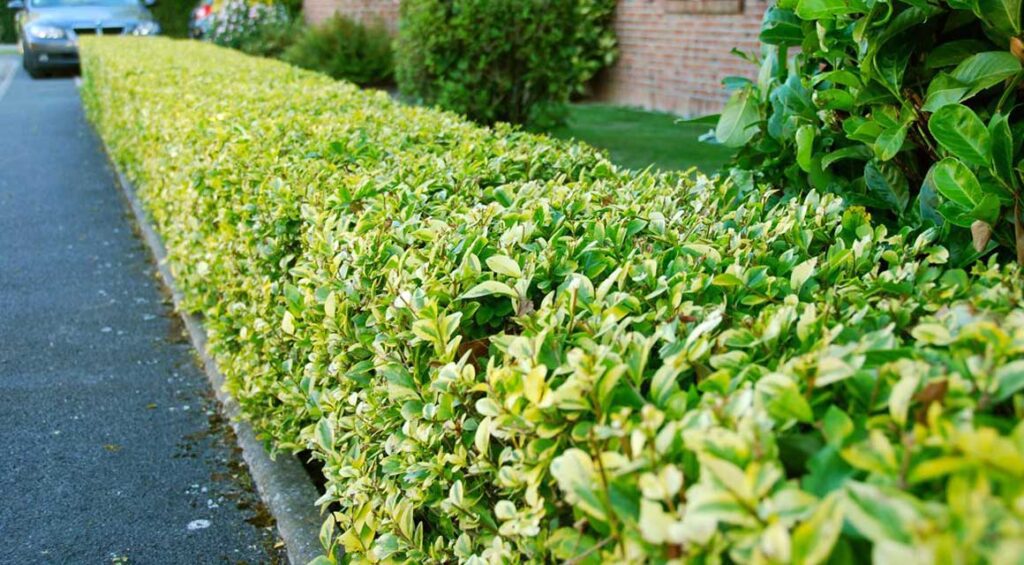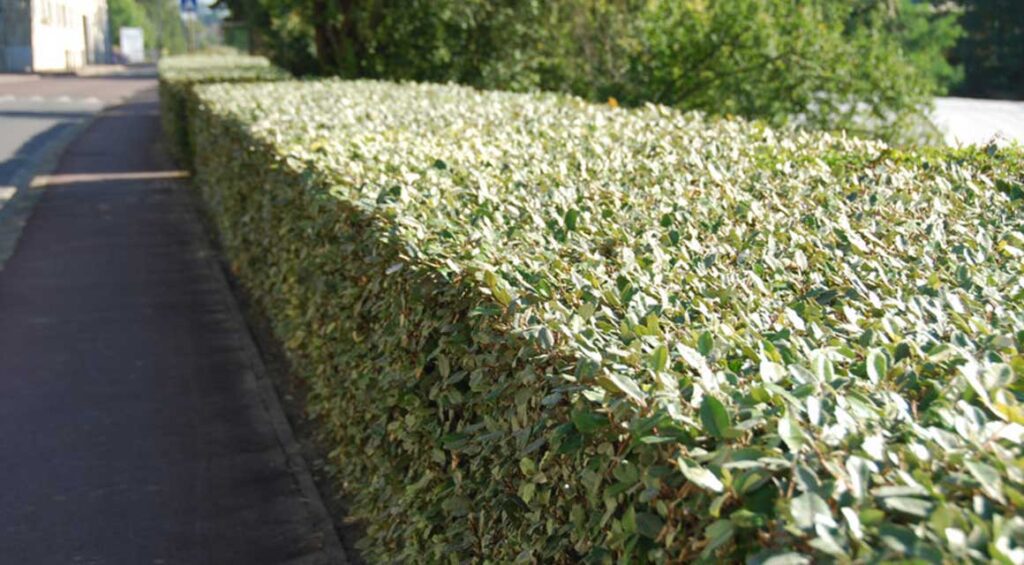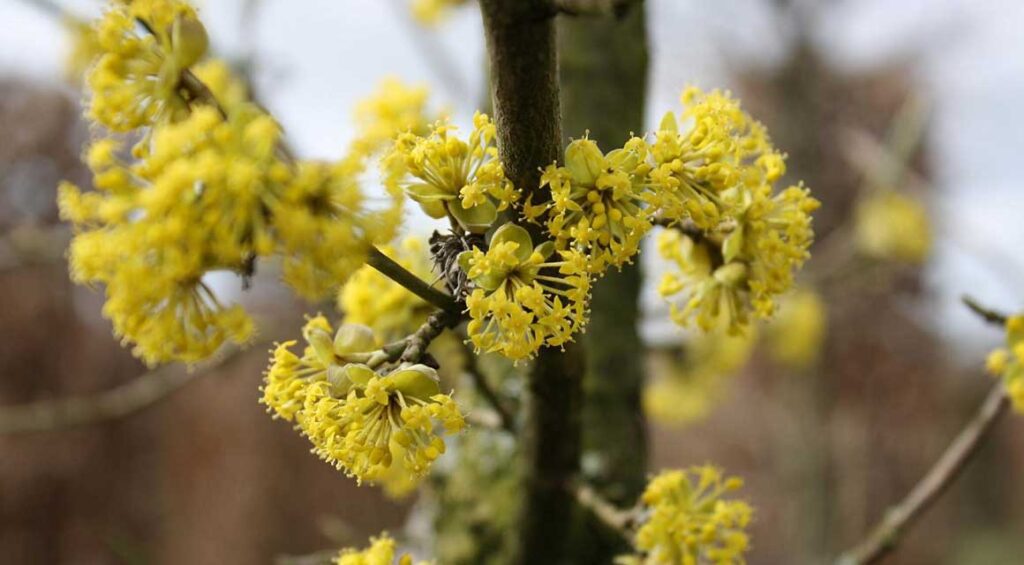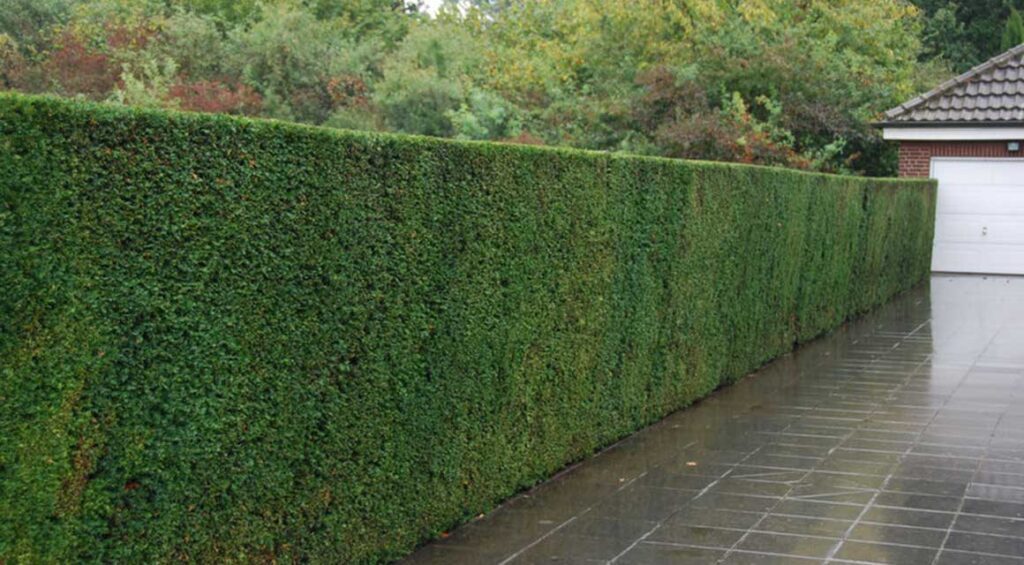Some gardens have such good soil that almost any plant can grow on it; other gardens have a less favorable location. Do you have a garden where it is proving difficult to keep plants thriving healthily or even alive? Then you should take a look at these hedge plants for problematic areas.

Contents
Polluted air? Choose a privet
A major problem for gardens located in urban areas is air pollution. For gardens located near a busy road or an industrial area, this problem is even more pronounced. One of the plants in our assortment that copes very well with polluted air is privet. While other plants often don’t do so well in polluted air, privet doesn’t mind much. It grows just as well in the city as it does in the countryside. Privet is ideal for urban gardens, commercial areas and even street green spaces.
The privet can grow almost anywhere. Funnily enough, it has problems with very nutrient-rich soil. Sand or humus-rich soil is best for this plant. It also requires extremely little maintenance. Privet grows best unless it is fertilized or given additional nutrients. So once it has rooted a bit in the garden, annual pruning is all that is needed to keep this hedge plant in good shape. So it’s not just a hedge plant that’s easy to plant, but easy to care for!

Hedge plants for coastal areas
The city gives many plants a hard time; but strong winds and salty sea air can also be a challenge for a garden owner. What plants are suitable for planting in a coastal area? A popular option for coastal areas is the oil willow, also known as silverberry. The oil willow is an evergreen hedge plant with a dense structure and beautiful oval leaves with a silver sheen. This hedge grows to a height of approximately 1.60-1.80 meters and is suitable for creating formal hedges. It usually does not provide complete privacy, but can be a real eye-catcher in the front garden, for example.
Griselinia littoralis also thrives well on coasts. In fact, the “littoralis” part of the name even literally means “on the coast.” This hedge plant is also evergreen and can grow up to four feet tall. One drawback to Griselinia is that it is native to New Zealand, so it may have some trouble with European temperatures in the winter. In case of heavy frost (at night), it is advisable to protect this hedge plant from cold and wind. Because of its evergreen leaves and dense growth habit, it makes an excellent privacy hedge.
If you want a classic conifer hedge, then on the coast you should choose the thuja. This is slightly more resistant than other conifer species to wind and the salty soil/air of the sea. Conifers make excellent hedge plants. They are usually tall, evergreen, low maintenance, and are very easy to trim into a formal shape because of their small, curled leaves and dense growth habit. All of this is true of thuja, which is why it is an extremely popular hedge plant. Conifers are hardy and last a very long time.

Hedge plants for clay soil
Many hedge plants have difficulty growing in clay soil and prefer either sandy or humus-rich soil. Clay soil is a difficult soil type because it has wide fluctuations between very wet and very dry. It also retains water for a large period of time. No matter what hedge plant you choose, even with a clay soil: You need to provide good drainage, because the roots can rot in standing water. Although most popular hedge plants, such as yew or cherry laurel, do not do well in clay soil, there are some hedge plants that can handle it.
A few examples are hornbeam, winter linden and dogwood. The hornbeam is a popular hedge plant that is very hardy and easy to care for. Although the hornbeam is basically deciduous, it usually retains some of its leaves if the winter is not too cold. Hornbeam and basswood are suitable for both formal and informal hedges. Dogwood has a more open growth habit, so it is really only suitable for informal hedges. Dogwoods are particularly suitable for the design of garden fences. This plant is also safe from animals.

Intelligent landscaping
Sometimes it’s hard to find a plant that’s beautiful, but “does” what it’s supposed to do and thrives in the garden. Sure: you can search until you happen to find the perfect hedge plant, but you can also solve a lot with smart landscaping. If you have a difficult garden soil, such as a clay soil, you should create and use a lot of raised beds and terraces. Here you can also use better garden soil so that other, more suitable hedge plants will thrive.
Of course, when it comes to air quality, it is a little more difficult. Plants can be protected from strong winds by planting them behind a wall, for example, but you’ll have to be lucky with the location of your garden to be able to form a hedge this way. Also, if you are using a raised border for your hedge, you could opt for yew by the sea, for example; it will withstand strong winds, but tends to disdain salty soils.

